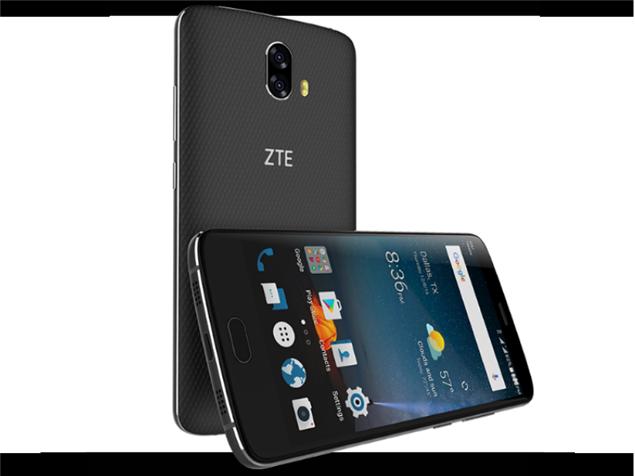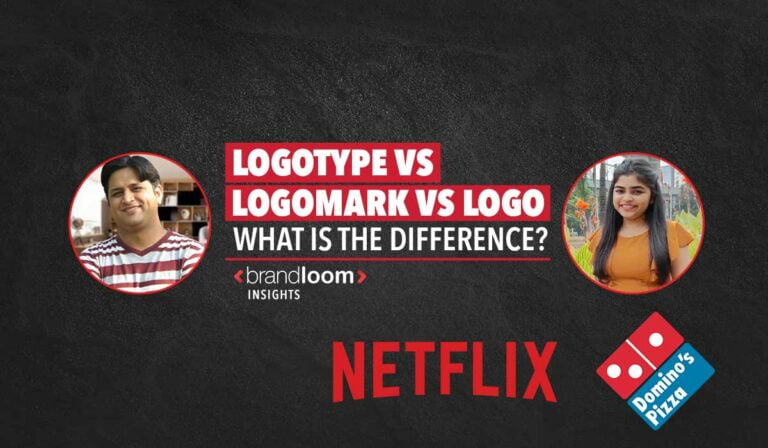
Adi Robertson: I’m convening this roundtable because for some reason, the world now has a “smart hairbrush,” and we need to talk about it.
Let’s be clear, the smart hairbrush looks kind of terrible and pointless. But it seems to be inspiring the same kind of weird dismissiveness that always comes up when someone talks about stereotypically feminine tech, and I don’t think that’s right. I love the idea of beauty and self-care gadgets, especially at CES, where a concept is more important than whether it’s worth real money. So my question, really, is “Why is this hairbrush so bad, and how could it be less bad?”
I have long hair, I’m awful and careless at beauty routines, and I would love some high-tech robotic hairbrush that did all the annoying work of detangling it for me. But all this thing does is give me data that produces more work. Like the smart mirror we also covered at CES, it could be useful if I were already a beauty expert and wanted to up my game. That is not me. Where is the lazy woman’s version?
/cdn0.vox-cdn.com/uploads/chorus_asset/file/7750829/630931868.jpg)
Kaitlyn Tiffany: The hairbrush is dumb in the way most connected gadgets are dumb (they’re unnecessary and generally not very secure… please don’t hack my hair) but it’s also dumb in a different way. The promise of tech is that it solves a problem, but most of the lady-marketed gadgets I’ve seen (smart hairbrush, smart mirror, connected pregnancy test) just give you data that doesn’t make any sense unless you’re already an expert on taking care of yourself. What if… someone made it easy? Where is the makeup robot that will just paint my face so I am beautiful and don’t have to think about it? Where is the $400 hair dryer that forbids me from freezing my bangs in an upright position? A smart hairbrush that tells me my hair is unruly isn’t helping anymore than a mom who looks your prom dress up and down and says “hmm.” The data is also, of course, geared toward making you buy L’Oreal products. And if I had to hazard a guess I would say this brush only works for people with the beauty industry’s default type of head… “Unruly” as a term applied to hair that can’t get through a flat brush’s bristles on the first pass is pretty racially specific.
It’s a time-honored tradition of the beauty industry to create a woman-specific problem and then sell it to us. While it’s flattering that capitalists realize women have money to spend (thanks, cuties!), they’ve used that knowledge mostly to exploit / further the idea that we don’t know our own bodies (thanks public education!). In a world of endless data, products, and half-solutions, we’ll never know all there is to know about those bodies and how to keep them clean, healthy, and hot. A lot of new tech is being sold along the same lines — you never knew your face sucked until this mirror told you you have wrinkles in your mid-20s; you were never doing the best you could to stay not-pregnant until you bought this app. Thanks, but I’ve already quantified myself enough with Teen Cosmo (RIP) quizzes that identify my complexion, body type, ideal fall wardrobe color scheme, and hair texture. Being a teen was incredible.
Tasha Robinson: Yeah, it’s ridiculous that corporations are trying to make us pay $200 for a brush that will collect user data to tell us things we should know by looking in the mirror, e.g., “Your hair is tangled.” The idea of judging our hair condition by brush data, instead of by looking at our hair, makes it feel like our hair is a head-Tamagotchi, a creature we can only interact with electronically, and have to maintain in certain arbitrary but e-approved ways to keep it alive and happy. But that isn’t what bothers me most about the “smart hairbrush.” The really annoying thing is that those corporations want us to pay $200 for a product that will order us to buy more of their products. I think we’ve all had the experience of getting a haircut and having the stylist say “Oh, your hair is [oily / dry / frizzy / limp / whatever], you really need to buy some [expensive product we just happen to sell here and that the stylist is getting a commission for selling].” The idea of paying extra for a daily marketing experience is just maddening to me. At least a commission-hungry stylist is actually capable of determining your hair’s texture and condition, and making an appropriate pitch across a few different in-house brands. The smart hairbrush recommendations just seem painfully, obviously self-serving.
They also sound like the nightmare science-fiction writers have been predicting at least since Ray Russell’s 1961 short story The Room, about a world where every device and every available surface — walls, ceilings, bathroom mirrors, bedsheets and pillows, you name it — projects constant subliminal or direct advertising. Think of the talking walls yelling your name as you go by in Minority Report, or the nonstop living space ads you have to pay to turn off in the Black Mirror episode “Fifteen Million Merits.” A brush that orders you to buy its parent company’s hair products sounds like a version of those futures that we’re expected to fund ourselves.
/cdn0.vox-cdn.com/uploads/chorus_asset/file/7745615/smart_mirror_ces_2017_unveiled_1.jpg)
Liz Lopatto: Sometimes I wonder if the people who come up with this stuff even have beauty routines. If you’ve spent an hour beating your face and fixing your hair, that’s time you’re not spending on something else. Why make it even more complicated?
I’m lazy; let me do less. I don’t brush my hair — I use a wide-toothed comb. I’m loyal to my salon because my stylist knows I don’t use hair products and gives me a haircut that will work without fuss. I absolutely believe in moisturizer, which is why I use Bag Balm on my extremities and occasionally my face. I wash my hair with shampoo once a week. (BTW: deep conditioner? It’s a lie.) Most of the time, I don’t wear makeup at all — I’d rather spend that half-hour or so asleep.
What good beauty tech can do for me? Save me time. I’m with Kaitlyn here: I want tech to style the cowlick out of my bangs while I sleep. I’d like to hold up a compact and just suddenly be wearing makeup, rather than having to apply it myself. Self-repairing tights that fix my inevitable holes and runs. Nail polish! Figure out how to do my dominant hand so I don’t have to. (This is why those Sally Hansen pre-printed applicator strips are so great.)
Lizzie Plaugic: Okay here’s some things I found that, if nothing else, seem to be useful time-saving gizmos (still, they are expensive and it’s another issue to consider that time-saving is a luxury for the already wealthy). On the topic of robots that will paint you beautiful, there are airbrush machines that will spray makeup onto your face. This pod thing is supposed to moisturize your face and hair while you sleep. I’m pretty sure it just mists you all night, but you don’t need to add water, so it’s anyone’s guess what it’s misting you with. Also if you wanna drop $12 for it, you can buy spray-on nail polish that apparently doesn’t stick to your skin. You just aim it listlessly at your hand and the paint gloms onto your nailbeds. Still most beauty gadgets, like this vibrating eye massager or this “microcurrent facial toning device” tend to point out new problems (are you not paying enough attention to your under-eye area, aging one?) rather than solve old ones.
Kaitlyn: The airbrush robot! I need that, but not for $195. Thank you, Lizzie. Now I have something to aspire to. Apart from that, the only lady-marketed startup product I’ve ever been impressed by is Thinx underwear. You know what is weirdly stressful even after many years? Having a period. You know what is a dumb way to solve that problem? A connected tamponthat makes you stick a wire up your vagina and plug the other end into a device on your hip. You know what is a smart way to solve it? Non-hideous, non-embarrassing, absorbent underwear!
Adi: And time-saving and de-skilling isn’t the strong suit of “smart tech” that’s all about collecting huge amounts of information. So things like the hairbrush seem like an insult. I want the Soylent of makeup instead.
Of course, Soylent is a lot like Ensure with a fancy tech name, so maybe the problem is more that I’m so embedded in one industry that I’m not conversant in all the products you see outside something like CES. I certainly tried enough optimized ways to remove body hair and cure acne as a teenager without Silicon Valley ever getting involved. Lots of it was snake oil, but so are plenty of gadgets on Kickstarter.
Liz: The most exciting beauty tech, for my money, has been the advent of pen eyeliner, which is easier and less messy for those of us who struggle to get a good line going. (I like Kat von D’s Tattoo Liner, in particular.) When we talk about good uses of beauty tech, we’re also talking about applicators and formulations — not whether my mascara applicator connects to Wi-Fi. That means chemistry and old-fashioned engineering, not software. But for some reason, we don’t think of those things as being tech per se. Good chemistry can get you a loyal fanbase, though; ask anyone who uses Living Proof or Bumble & bumble.
Adi: So the real question is, what can the CES-style tech industry bring to the table, that isn’t just blundering in and adding Wi-Fi and Alexa to everything? And what should the tech press be looking for? Because part of the problem is that Wi-Fi will get coverage in a way traditional beauty tech won’t.
Liz: The tech industry needs to talk to the experts — all the time-saving products I love come from beauty companies! The nail strips, the pen liner… those are probably the result of long-standing knowledge about how and when we use this stuff. I bet L’Oreal et al have reams of data on what people actually want from their beauty routines. Maybe the solution isn’t consumer tech — it might be business-to-business analytics that help companies figure out where to focus their R&D efforts.
Tasha: Problem with that is, I’m betting that what the average woman most wants from her beauty routine (apart from feeling more beautiful when it’s done) is for it to take less time and cost less money. And that’s not a need beauty companies will ever want to serve. Their needs are directly opposed to ours. They have an obvious vested interest in making us feel like we need more products and need to spend more money. No beauty-product corporation wants to introduce a product you only need to buy once, or that replaces, say, your 20 bottles of nail polish with one color-changing permanent nano-dye. I think we’re going to have to look to tech companies rather than established outlets like L’Oreal for that kind of industry-disrupting idea.
Liz: My biggest question with respect to beauty is: will a new product make me break out? An individualized way of answering that question before I buy foundation or sunscreen or anything else would be worth money to me.
Tasha: Good point. I’m ready for the hair or skin equivalent of a Glucometer. If someone can poke a drop of their blood into a sensor and instantly find out their glucose levels for diabetes management, I’d like to see the equivalent where I can stick a strand of my hair or a few skin cells into a reader and get back useful scientific data on things like pH balance and dryness, and some brand-agnostic advice on the right product to use for my specific actual conditions.
The process of picking shampoos and conditioners and keratin treatments and leave-in styling agents and pore-cleansers and moisturizers and blah blah blah feels so hit-or-miss, and I have no idea how this concoction of chemicals I’m supposed to smear on my body is radically different from that other one. If real-time data, analysis, and recommendations are supposed to be the wave of the future in women’s products, give me some data that feels like it’s serving me instead of a brand, and that improves my choices instead of trying to shame me about them.
Lizzie: On the press side, I think it’s a matter of treating beauty like an another aspect of tech. Bonkers gadgets will always get coverage just by virtue of being weird, but don’t reporters also look for stuff that people will actually use? Feels like the same vetting process can be applied to beauty gadgets. What product, Wi-Fi’d or not Wi-Fi’d, is actually worth taking up space in my already crowded bathroom cabinet? Maybe the gap in coverage is a failure to recognize that there’s an audience for this.
Please read this article so we know there’s an audience.
[Source:-The Verge]





